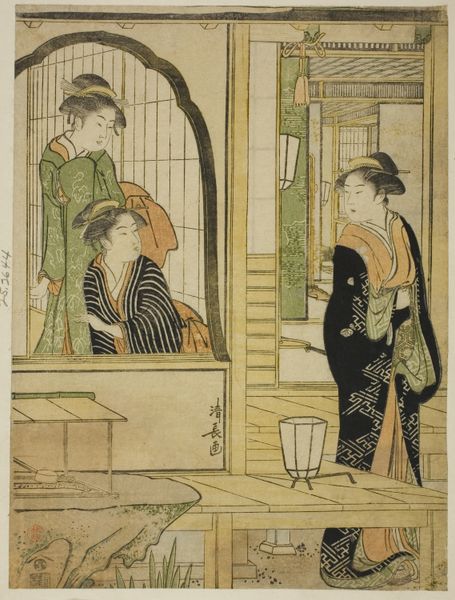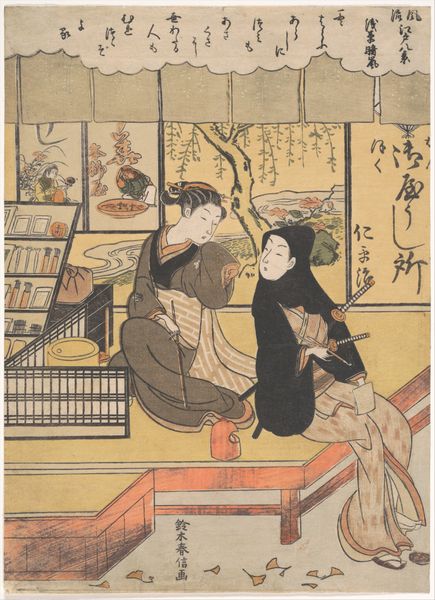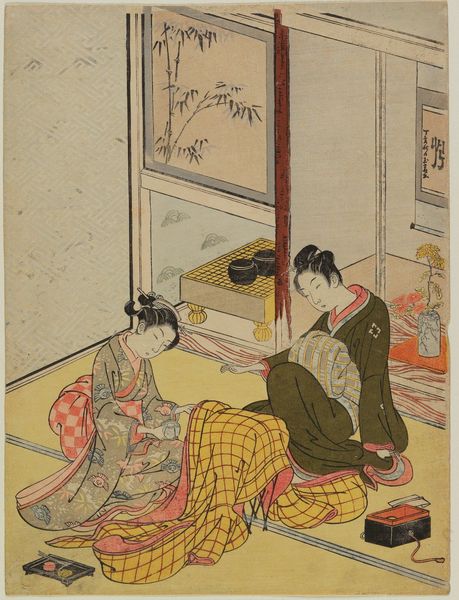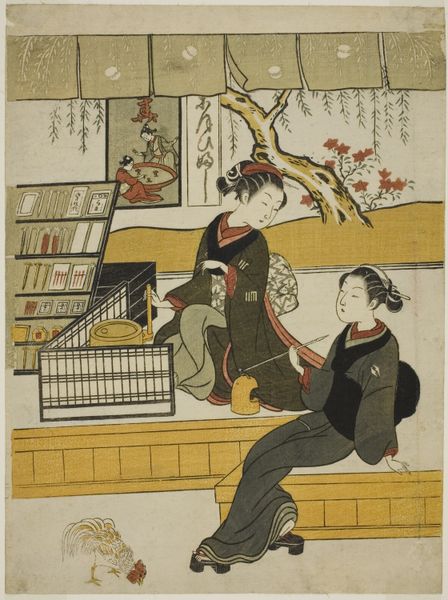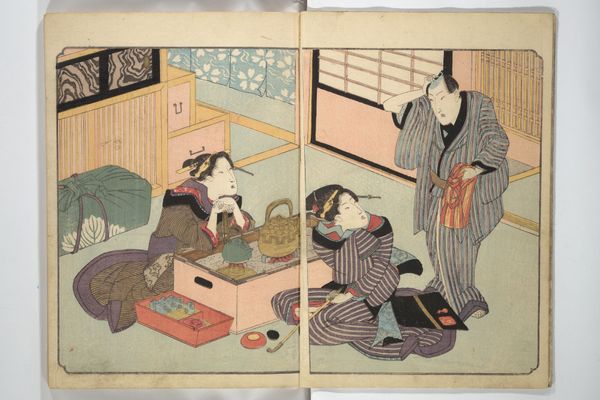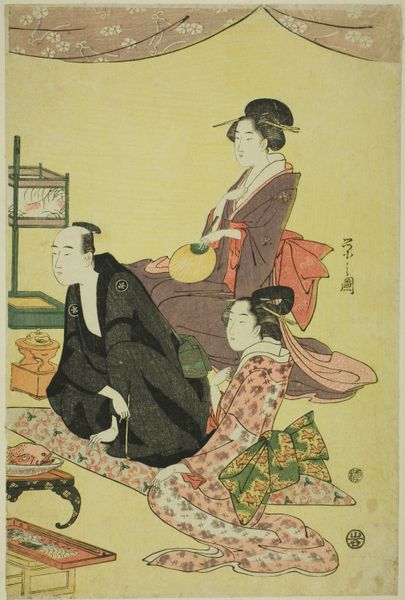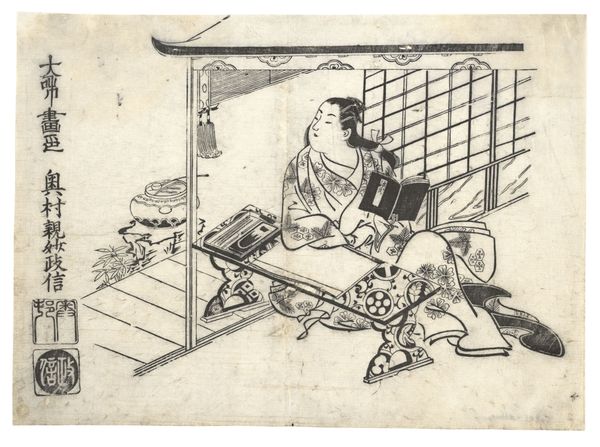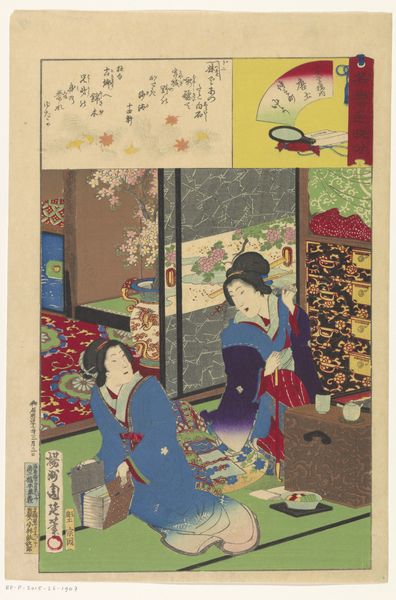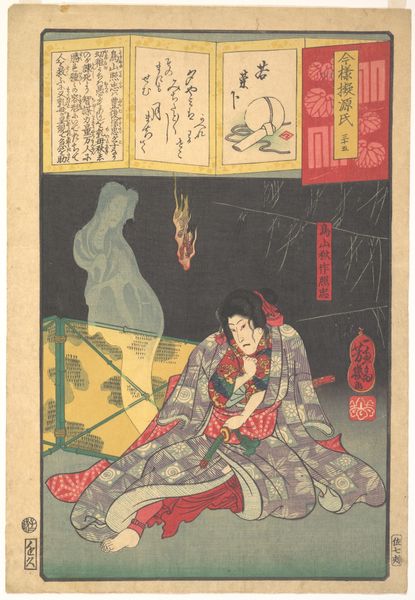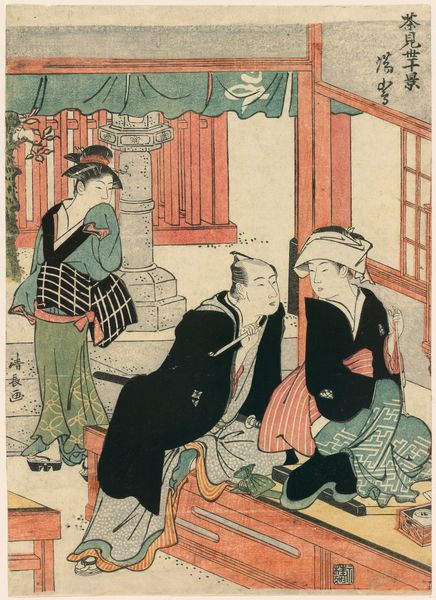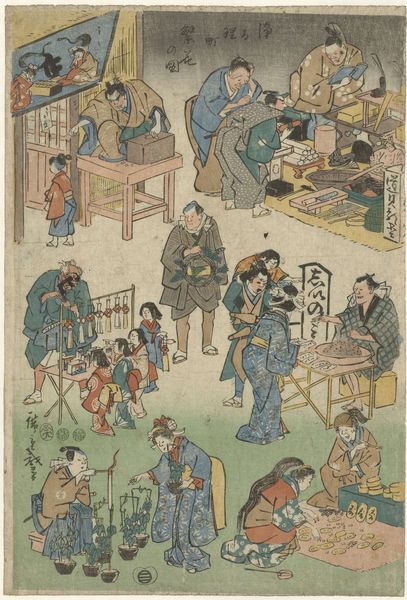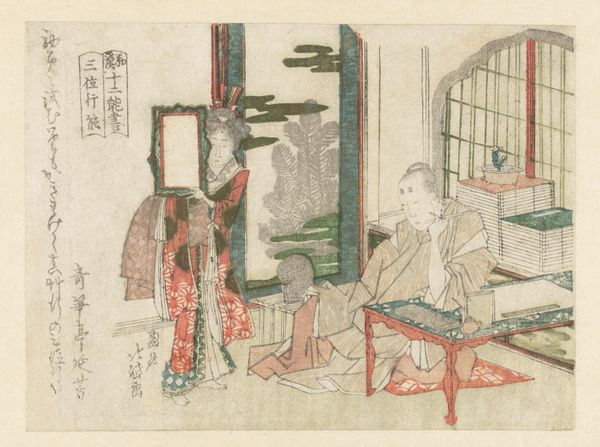
Portrait of Americans: Oven for Breadmaking (Amerika-jin no zu, pansei no kamato) 1861
0:00
0:00
#
portrait
# print
#
caricature
#
asian-art
#
caricature
#
ukiyo-e
#
japan
Copyright: Public Domain
Curator: I find myself oddly charmed by this ukiyo-e print, a work entitled "Portrait of Americans: Oven for Breadmaking" created around 1861 by Utagawa Yoshikazu. The Art Institute of Chicago is lucky to have it in their collection. What are your initial thoughts? Editor: My first impression is one of slightly perplexed amusement. The rigid formality of the men's clothing clashes with the mundane, almost caricatured scene of breadmaking. It evokes a sense of culture clash, doesn’t it? Curator: Precisely! During the late Edo period, when Japan opened its doors to the West after centuries of isolation, there was great curiosity, but also a certain level of misunderstanding and caricature, present in Japanese depictions of foreigners. Prints like this were produced as mass media, shaping public perception. Editor: Absolutely. Consider the symbolism here: bread, a Western staple, being presented almost ceremoniously. Notice how the faces seem strained, not exactly joyous. Bread in European iconography symbolizes hospitality, community... Yet here, those ideals seem burdened, distorted by the act of observation itself. Curator: And look at the details—the exaggerated features of the Americans, their stiff postures, even the slightly awkward rendering of the kitchen setting. The image hints at the difficulties in bridging cultural divides and speaks volumes about how the Japanese perceived these newcomers. It’s also significant because the image participates in a well-worn tradition in Japan of portraying the "exotic foreigner." Editor: This "exotic" portrayal relies heavily on existing symbols. These aren't just "Americans baking," they are a coded representation viewed through a lens of tradition, apprehension, even gentle mockery. The composition leads the eye through a narrative not of culinary process, but of cultural assimilation--or the difficulty thereof. The very mundane scene creates, or perhaps enhances, its propagandistic affect. Curator: It's a potent reminder that even seemingly simple images can be deeply embedded with social commentary, mirroring prevailing attitudes of the time. These types of caricatures provided Japanese citizens an accessible image of Americans. Editor: Yes, unpacking that complexity has truly enriched my appreciation of the piece, prompting consideration for its multifaceted purpose within the rapidly changing social and political circumstances.
Comments
No comments
Be the first to comment and join the conversation on the ultimate creative platform.
